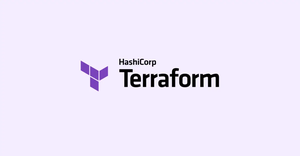Introduction
ReplicaSets are one of the foundational building blocks of Kubernetes systems. They ensure that a specified number of replica Pods are running at any given time. In this tutorial, we will dive deep into the world of ReplicaSets, covering their significance, how to create them, and various examples to illustrate their use in a Kubernetes cluster. By the end of this tutorial, you should have a solid understanding of ReplicaSets and how they contribute to the reliability and scalability of applications.
What is a ReplicaSet?
A ReplicaSet’s primary purpose is to maintain a stable set of replica Pods running at any one time. This is often crucial for ensuring the availability and scalability of your application. If a Pod in the set fails, the ReplicaSet replaces it to maintain the desired state. Similarly, if there are too many pods, the ReplicaSet will stop the excess pods.
Declaring a ReplicaSet
The configuration of a ReplicaSet is done through YAML or JSON manifest files. Here is a minimal YAML example:
apiVersion: apps/v1
kind: ReplicaSet
metadata:
name: example-replicaset
labels:
app: myapp
spec:
replicas: 3
selector:
matchLabels:
app: myapp
template:
metadata:
labels:
app: myapp
spec:
containers:
- name: myapp-container
image: myapp:1.0.0
This YAML file creates a ReplicaSet named ‘example-replicaset’ that ensures three replicas of the Pod are running.
Creating Your First ReplicaSet
To create a ReplicaSet, save the above YAML to a file named ‘replicaset.yaml’ and apply it with kubectl:
kubectl apply -f replicaset.yamlYou can verify the creation of your ReplicaSet using:
kubectl get rsScaling your ReplicaSet can be performed by updating the ‘replicas’ field in the YAML file and re-applying it or by using the following command:
kubectl scale --replicas=5 rs/example-replicasetLet’s detail rolling updates, health checks, and advanced selector strategies as we build up our understanding.
Understanding ReplicaSet Selectors
Selectors are the method by which a ReplicaSet identifies which Pods to manage and can include ‘matchLabels’ or ‘matchExpressions’.
Advanced Selectors
Here is an example of more complex selectors using ‘matchExpressions’:
...
spec:
replicas: 3
selector:
matchExpressions:
- key: tier
operator: In
values:
- frontend
...
Rolling Updates with ReplicaSets
Now, with Deployments, we can manage ReplicaSets and perform rolling updates. Here’s a basic example of a Deployment managing a ReplicaSet:
apiVersion: apps/v1
kind: Deployment
metadata:
name: myapp-deployment
spec:
replicas: 3
strategy:
type: RollingUpdate
rollingUpdate:
maxUnavailable: 1
maxSurge: 1
template:
...
Useful Commands for Managing ReplicaSets
Once you’ve gotten your feet wet with configuring and deploying ReplicaSets, the following commands will become part of your regular interactions with Kubernetes:
-
kubectl delete rs example-replicaset– Command to delete a ReplicaSet. -
kubectl describe rs example-replicaset– To see detailed information about the ReplicaSet. -
kubectl replace -f replicaset.yaml– To replace the ReplicaSet with an updated configuration. -
kubectl scale --replicas=6 rs/example-replicaset– To scale the number of replicas.
Conclusion
In conclusion, ReplicaSets are a powerful feature of Kubernetes that ensure the desired number of pod replicas are always running. They form the basis of higher-level abstractions like Deployments and are pivotal for running resilient applications. With the knowledge and examples provided in this tutorial, you can now effectively use ReplicaSets in your Kubernetes environments.


